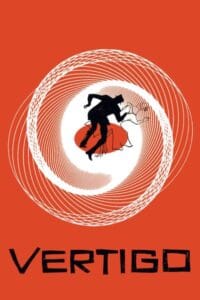Have you ever wondered what goes into the selection of filming locations for a series that promises suspense and macabre storytelling? The process is often complex and multifaceted, involving a careful consideration of various factors such as historical accuracy, aesthetic value, and logistical feasibility. What role do landscapes play in shaping the atmosphere of a show like The Terror? The choice of location can significantly impact the viewer’s experience, as the right backdrop can evoke feelings of isolation, dread, or unease, crucial for a series steeped in horror.
In an age where viewers are increasingly aware of the intricacies behind the screen, understanding the filming locations can greatly enhance our appreciation of the narrative and its visual zeal. Each site serves not just as a setting, but as a character in its own right, contributing to the overall mood and theme of the story. This article delves deep into the captivating locations that brought The Terror to life, exploring both the well-known sites that fans might instantly recognize and hidden gems that define this haunting tale. From desolate landscapes to historic buildings, we will uncover how these choices elevate the chilling narrative and immerse viewers in the eerie world of the show.
City Locations
Big Sur, Monterey County, California
One of the most breathtaking filming locations for The Terror is undoubtedly Big Sur. With its rugged coastline, steep cliffs, and untamed nature, Big Sur provides a stunning backdrop that complements the show’s dark themes. The dramatic scenery becomes almost a character in its own right, enhancing the sense of isolation and trepidation felt by the characters. It’s easy to see why filmmakers are drawn to this iconic stretch of California’s coastline, as it evokes feelings of both beauty and foreboding, mirroring the internal struggles of the show’s protagonists.
Location Types
Mansions, American, NatureScapes, Beach/Oceanview
The locations chosen for The Terror are diverse, ranging from grand mansions to pristine nature scapes. Each site serves to enrich the storytelling and create a multi-layered viewing experience. The juxtaposition of lavish, yet ominous mansions with Natural landscapes amplifies the characters’ emotional struggles, effectively reflecting their tumultuous journeys. The thoughtful selection of coastal views also creates a stark contrast between the serenity of the ocean and the chaos of the characters’ lives, drawing viewers deeper into the narrative.
Location Styles
Beach House, Castle/Chateau, Gothic/Victorian, Rustic
The architectural styles featured in The Terror are as varied as the locations themselves. Beach houses evoke the allure and danger of the ocean, while castles and chateaus add a gothic touch that resonates with the show’s themes of despair and madness. The rustic settings, complete with period-appropriate design elements, transport viewers back in time, allowing them to immerse themselves fully in the world of the show. This mix of styles showcases the creators’ commitment to authenticity, enhancing the overall aesthetic and impact of the series.
About The Terror
The Terror, based on Dan Simmons’ acclaimed novel of the same name, weaves a chilling and haunting tale of a doomed Arctic voyage plagued by supernatural forces and profound psychological disintegration. Set against the stark and unforgiving backdrop of the mid-19th century, the series intricately follows the ill-fated expedition of the British Royal Navy, specifically the HMS Terror and HMS Erebus, as they navigate treacherous and uncharted waters in search of the Northwest Passage.
As the crew faces the relentless cold, isolation, and the looming presence of malevolent spirits that seem to manifest from the icy landscape, the strain of their circumstances begins to unravel their camaraderie and mental fortitude. The portrayal of the harsh Arctic conditions—where every breath is a struggle against freezing temperatures—and the psychological toll of their dire situation is significantly enhanced by the series’ carefully chosen filming locations. These locations serve as a stunning yet desolate canvas for its memorable and haunting narratives, immersing viewers in an atmosphere of dread and survival that lingers long after the credits roll. Through its rich storytelling and complex character development, The Terror invites audiences to reflect on the fragility of humanity when confronted with the unknown.
The Terror Locations
The filming locations for The Terror were meticulously chosen not only for their stunning visual appeal but also for their profound ability to convey the emotional weight of the story. Each site was carefully selected to resonate deeply with the themes of despair, isolation, and the haunting legacy of colonialism that permeate the narrative.
The production team traveled extensively, scouting various landscapes that would enhance the atmosphere of the series. For instance, the rugged, icy terrain not only serves as a backdrop for the horror that unfolds but also symbolizes the relentless struggle against nature that the characters face.
Additionally, the incorporation of historic architecture adds layers of meaning, evoking the ghosts of the past and the impact of colonization on both the land and its people. This thoughtful combination of striking natural landscapes and evocative structures creates a rich, immersive experience that enhances the intensity of the plot, drawing viewers into a world that feels both hauntingly beautiful and deeply unsettling. The settings thus become characters in their own right, contributing to the overall emotional landscape of the series.
The opening scene of The Terror
The opening scene of The Terror masterfully sets the tone for the entire series, drawing viewers into a chilling world shrouded in mystery and dread. The heavy grey skies loom overhead, while the ominous, churning waters reflect not only the beauty of nature but also the characters’ profound uncertainty as they embark on their perilous journey into the unknown. The carefully chosen location, with its jagged icebergs and icy terrain, accentuates the weight of their voyage, as viewers are immediately made acutely aware of the lurking dangers that hide in the shadows. This harsh landscape, filled with treacherous obstacles and the constant threat of the elements, serves as a constant reminder of the characters’ vulnerability. By placing the audience directly into this bleak and foreboding environment, the series effectively establishes an atmosphere of suspense and tension right from the outset, setting the stage for the harrowing experiences that lie ahead. This initial immersion invites viewers to not only witness the journey but to feel the weight of the fear and uncertainty that accompanies it.
Duvalier meets Helene a second-time scene in The Terror
In the second encounter between Duvalier and Helene, the camera work and deliberate choice of location create an intimate yet tense atmosphere that profoundly affects the viewer’s experience. The haunting scenery, characterized by dramatic cliffs and a turbulent sea, serves as a striking backdrop for their charged exchange, amplifying the stakes of their emotional connection and the gravity of their circumstances. The juxtaposition of their distinct personalities against the rugged landscape not only highlights their vulnerabilities and desires but also reflects their internal struggles, showcasing the power of place in influencing character interactions. The way the camera captures the subtleties of their expressions and body language further immerses the audience in their complex relationship. This scene encapsulates how the filming locations contribute not just to the aesthetic appeal but also to the narrative themes of longing, despair, and tragedy, making the viewer acutely aware of the interplay between the characters’ emotions and their physical environment. Each element of the location reinforces the depth of their feelings and adds layers to the unfolding story, leaving a lasting impression on the audience.
Duvalier and the Baron meet scene in The Terror
The meeting between Duvalier and the Baron is fraught with tension, exemplified by the stark surroundings that envelop the characters. Filmed in a location that evokes both grandeur and despair, this scene illustrates the intricate dynamics of power, ambition, and human frailty. The choice of a location that mirrors their internal conflicts enhances the audience’s understanding of the stakes involved. Every element, from the architecture to the surrounding landscape, plays a crucial role in highlighting the emotional intensity of their confrontation.
Stefan talks with Ilsa’s ghost scene in The Terror
The ghostly interaction between Stefan and Ilsa encapsulates the supernatural elements of The Terror. Filming in a setting rich with atmospheric details, such as the chilling winds and the creaking timbers of the ship, allows the audience to feel the weight of betrayal and loss permeating the air. The eerie ambiance created by the flickering candlelight and shadows cast on the walls underscores the sense of foreboding, while simultaneously creating a palpable tension that reverberates throughout the scene. This choice of location, with its hauntingly beautiful yet desolate surroundings, signals the show’s exploration of the past’s grip on the characters and how the emotional landscapes they navigate can conjure the haunting figures of their imaginations, reflecting their inner turmoil and unresolved conflicts. As viewers witness this spectral encounter, they are drawn deeper into the intricate web of relationships and the lingering effects of past decisions that haunt the present.
Katrina reveals her motives for trying to get the Baron murdered scene in The Terror
Katrina’s dramatic revelation about her motives is magnified by the location’s oppressive atmosphere, where shadows loom large and anxiety hangs in the air. The setting emphasizes the weight of her decision and the moral complexities at play. By crafting a location that mirrors the tension of this pivotal moment, the filmmakers effectively engage the audience, immersing them in a narrative ripe with intrigue and moral ambiguity.
Ilsa confronts the Baron scene in The Terror
In the climactic confrontation between Ilsa and the Baron, the location serves as both a literal and figurative battleground, reflecting the deep-rooted tensions that have been brewing throughout the narrative. The space is laden with history and emotional resonance, filled with echoes of past encounters that have shaped their relationship and fueled their animosity. Each corner of the room seems to whisper secrets of betrayal and longing, adding layers of meaning to their encounter.
As they face off, the atmosphere becomes charged with unspoken words and unresolved issues, palpable in the air and intensifying the emotional stakes of their conflict. The surrounding environment, rich with symbolism, amplifies their struggle, reminding them of everything at stake—not just their immediate desires but the entire arc of their shared history. This scene becomes a vivid testament to how thoughtful location choices can elevate a story, transforming a simple confrontation into a powerful narrative moment that resonates deeply with the audience, creating lasting impressions that remain etched in the viewer’s memory long after the credits roll.
Conclusion
The filming locations of The Terror are not merely backdrops; they are integral components of the narrative that shape the story’s atmosphere and deepen its emotional impact. By choosing diverse sites ranging from picturesque coastlines to ominous mansions, the creators successfully evoke feelings of tension, despair, and intrigue. These locations enhance the viewing experience, reminding us that the spaces we inhabit can profoundly influence the tales we tell. As you revisit The Terror, consider how the locations contribute to the mood and themes, enriching your understanding of this haunting series. Whether it’s the majestic beauty of Big Sur or the gothic charm of meticulously crafted sets, these locations invite us to reflect on the interplay between place and narrative in the realm of storytelling.







